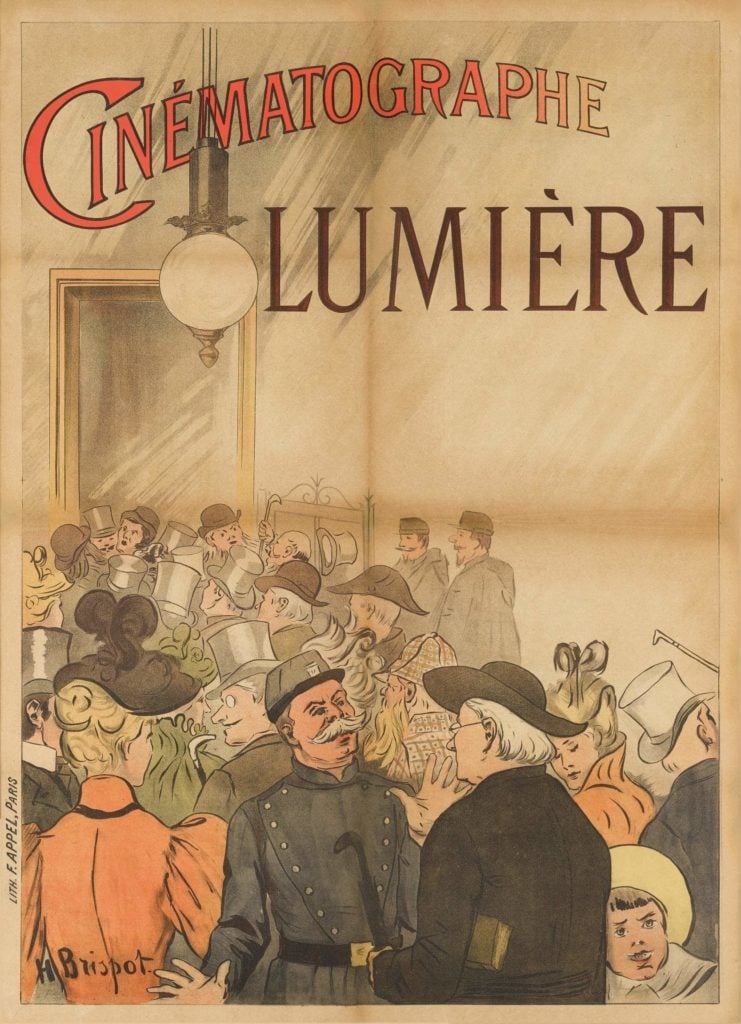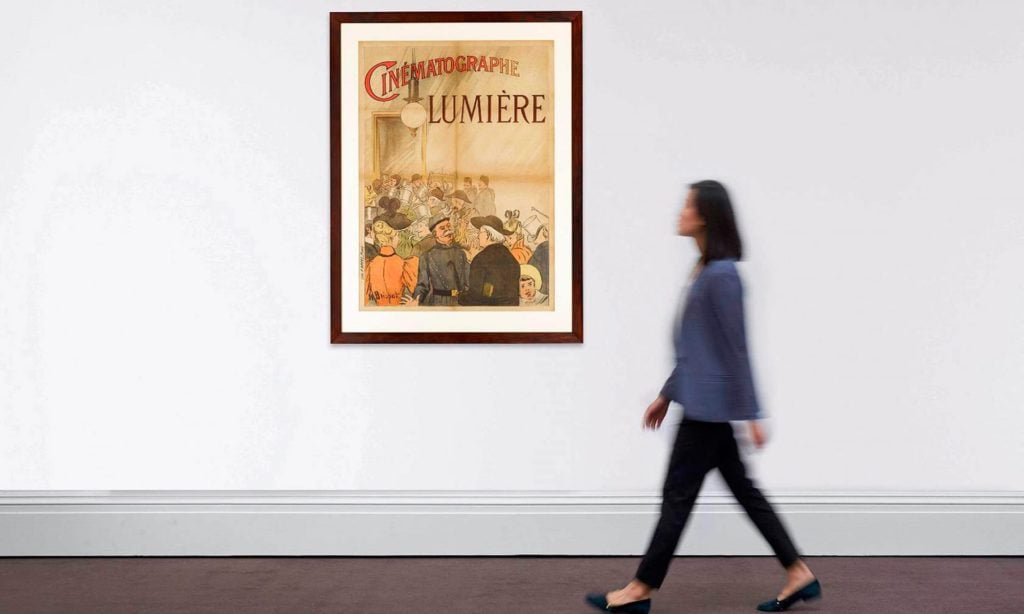Auctions
Sotheby’s Is Selling the World’s First Movie Poster, Which Promoted a Premiere Only 30 People Attended
The poster is an important piece of cinematic history.

The poster is an important piece of cinematic history.

Sarah Cascone

The world’s first public movie screening was a far cry from today’s red carpet premieres, with just 30 people in attendance for an event that lasted some 20 minutes at a Parisian cafe on December 28, 1895. Now, Sotheby’s is auctioning the poster for that event, held by filmmaker brothers Auguste Lumière and Louis Jean Lumière. It is likely the first film poster ever made.
The design by artist Henri Brispot is one of 164 rare film posters for sale in an online auction held by Sotheby’s London beginning August 28. The poster, which optimistically predicted a much larger crowd than the premiere actually received, carries a pre-sale estimate of £40,000 to £60,000 ($50,830 to $76,240). The auction house calls it “the ultimate collector’s poster,” adding that “this exceptionally rare piece has only surfaced a few times.”
The sale runs through September 4 and also includes rare film posters from the James Bond series, 2001: A Space Odyssey, Star Wars, and King Kong, among other classic movies.

Auguste Lumière and Louis Jean Lumière. Photo via Wikimedia Commons.
The significance of the Lumière Brothers’ screening was initially lost on the people of Paris—the press, though invited, snubbed the filmmakers by not attending. (A full 100 chairs had been set up in advance.) The Lumière Brothers presented a series of short films, all projected on a white canvas hung in the basement of the Grand Café, called the Salon Indien, on the Boulevard des Capucines.
These were not films as we think of them today, but rather short vignettes, each less than a minute—not that their brevity prevented the audience from being suspicious of the mysterious new technology. One woman is said to have shrieked in terror when the lights turned off before the footage rolled.
“Later on, there was widespread talk of magic and trickery, as though the moving images were the ruse of a clever conjurer,” writes Sotheby’s. “One man complained that it was unfair to make a mockery of the public in such a way.”

Henri Brispot, Cinématographe Lumière (1896) is for sale at Sotheby’s with a pre-sale estimate of £40,000–60,000 ($50,830–$76,240). Photo courtesy of Sotheby’s London.
The Lumière Brothers filmed workers leaving their factory, a baby with a fishing rod in a goldfish bowl, a man somersaulting over a blanket, and a boy stepping on a garden hose to the stop the flow of water—until the gardener holds the spout up to his face. Possibly the world’s first cinematic comedy and fictional film, L’Arroseur Arossé (Tables Turned on the Gardner) ends with the gardener taking his revenge with a spanking.
Two days after the premiere, the newspapers were on the story, and more than 2,000 people bought one franc tickets to screenings on January 1 and 2. “Within a few months, Lumière cinemas had opened in all major international cities, and screenings had been held for most heads of state,” notes Sotheby’s. Going to the movies was officially a thing.